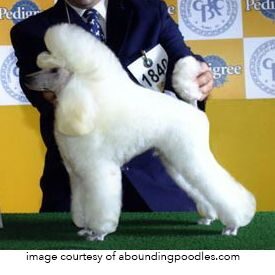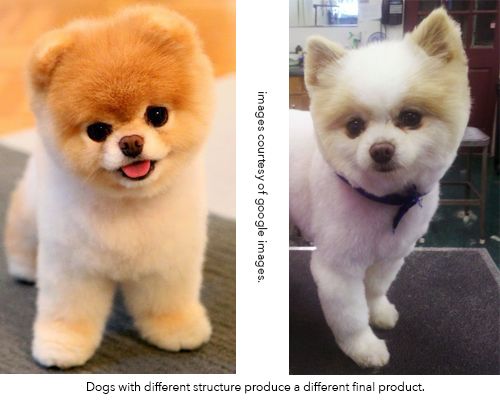
We hear it… a lot.
“I want it short but not too short - just a regular puppy cut.”
There is one official puppy pattern in the grooming world, and it is used in the show ring on poodles under 12 months of age.
Is this the cut you’d like? Probably not.
With any other breed, the definition of a “puppy cut” varies wildly from shop to shop and region to region. It could mean anything - a bath with feet/face/sanitary trimming only. It could mean a cut that is the same length all over - however the length is variable.
If you want to avoid confusion with your pup’s haircut avoid using the phrase “puppy cut” when explaining your groom to a new groomer. It may not mean what you think it means in Shop A, and you’re apt to be disappointed to find this cut looks nothing like Shop B’s puppy cut.
So how do you convey the haircut you want and avoid confusion? I’m glad you asked.
Think in terms of how much hair you would like *left* - not how much hair you’d like taken off. A groomer’s tools are labeled according to how much hair they will leave after the cut, and how much hair it takes off is dependent on how long the hair is. “Take half off” means we have to make guesses about which blade or comb combo will take half the length. But if you tell us “leave an inch of hair all over” - that’s much easier to accomplish! ProTip: When discussing your dog’s haircut “short but not shaved” is not an adequate description - everyone’s definition of shaved is different!
Try to be as specific as possible. Would you like the head very round and the ears short? Do you want us to leave bangs so you can tie the hair up? Do you like the hair on the tail left long or taken the same length as the body? If this is your first time at a specific salon, be prepared to visit a few times to get it “just right”. Sometimes what you’re trying to achieve is impossible, or the groomers don’t have the same picture in their head as you do. Trust me, they’re not purposely trying to do it wrong! It’ll take a little fine-tuning to settle on the perfect look for your pup.
If you can, bring a picture of what you’d like - but please listen to your groomer if they tell you something isn’t possible with your dog’s coat. Different textures produce different results and just because you have a Pomeranian and the dog in the picture is Boo the Pomeranian doesn’t mean your dog will end up looking exactly like Boo. Boo’s structure, the texture of his coat, etc all factor into that very sweet teddy bear expression. A sharper face, a longer nose, larger ears, a silkier coat…all means that the final product may look very different from a “Boo” cut.
Understand that longer haircuts require more work and may incur extra charges. Longer haircuts require more prep work and more scissoring. They require that every inch of the hair be completely brushed out and de-matted. If your dog is tangled - even moderately - it is safer and less stressful for your dog to cut beneath the mats and start over. If this is the case, your groomer should always call you before proceeding.
If you come to pick up your dog and something isn’t quite right - don’t be afraid to speak up! “Can I please get these bangs shorter?” It’s actually better to let your groomer know as soon as possible that something isn’t right so they can fix it - or note it down for next time. If you don’t notice it until you’re home - give them a call! Even if it’s not important enough for you to need it fixed right away, the work is fresher in the mind of the groomer and better notes can be made for your next visit.
Grooming can be a stressful event and I promise a good groomer isn’t happy when they do something “wrong” and have an unhappy customer. They really want to make the four-legged and two-legged customers happy!
The best way to have a good relationship with your groomer is to make sure you’re communicating clearly with them - make sure you have realistic expectations - keep your mind open and listen to their advice when they tell you something isn’t going to work - and expect to work together with your groomer.
And when you find a good one?
Never let them go. 🙂

